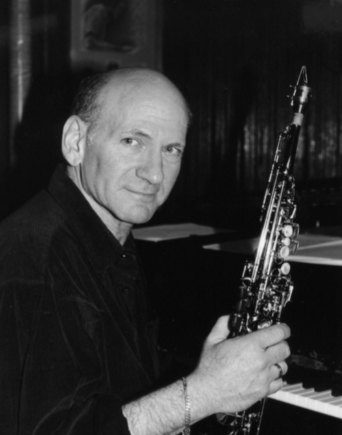"There are a few concepts of time feel that I discuss with students. One that is very important is the concept that a beat is an 'area'. It’s a space, not a point in time."
Excerpt from David Liebman's Lesson: Phrasing & Rhythm
Phrasing and rhythm are two of the most important things I teach to all instrumentalists. When someone comes to me for a lesson, first I listen to them play a tune or a blues, while I play the drums to check out their sense of form and time feel. My biggest area of concern is the eighth note feel, which is the common denominator of jazz rhythm; it’s like the penny to the dollar, the currency used in jazz. Of course, we use other combinations, but the basis is the eighth note (or triplet with the middle note left out, which for the sake of this discussion is the same thing). The number one fundamental skill that a jazz musician has to have is a good eighth note feel. The best way to get that is by imitating someone who does it well, through transcription.
Transcribing is the best way to understand subtleties, like eighth note feel and nuance. You start out imitating someone and eventually it becomes your own way as it filters through. Some people may object to this approach because it’s a direct imitation of somebody else’s mode of expression; but to me it’s just a process and a means to an end. In the final analysis, you can never breathe like another person and your heartbeat will not be the same as someone else’s, etc. If you continue to evolve, it’s inevitable that you’ll come up with your own interpretation. If you don’t continue to evolve, the least you’ll end up with is a time feel like, say, Sonny Rollins (if you copied him)—which is not so bad!
There are a few concepts of time feel that I discuss with students. One that is very important is the concept that a beat is an “area”. It’s a space, not a point in time. If I hold my hands twelve inches apart, that distance is a beat at whatever tempo. That’s a big area, and inside it I can choose to strike my downbeat in the middle, at the end or in the beginning. Musically, we think of that as playing on top or bottom of the time, ahead or behind the beat, pushing or laying back. Words like “rushing” and “dragging” are the negative connotations of these concepts. They’re the extreme, which means you have overdone it and gone into the other beat. The elasticity of the beat is what I’m emphasizing. The fact that a beat is an area and not a definite point means that you have quite a bit of freedom. There are a lot of grays, not all blacks and whites. The slower the tempo, the more freedom you have, because you have a large area from which to choose where to place your beat. The “accurate” beat is being marked off by the metronome or the rhythm section (which, when the musical level is high, will be applying the same flexibility), allowing you to use the entire area for placing the beat wherever you choose.
For David Liebman's complete lesson plus musical examples, including a CD of David playing those examples, plus five more incredible lessons by other great artists, you just gotta pick up Master Lessons For The Creative Musician.
For more information about David Liebman check out his website.

